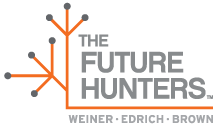After 45 years of studying the future, we have learned that there are several reasons our track record has been so accurate. One is the way in which we have trained our minds to see more clearly and more objectively. In The Future Hunters’ global best-selling book FutureThink, we explained 16 of these ways, or what we call “thinking technologies.”
A sampling of our thinking technologies are described below.
Educated Incapacity: Seeing Through Alien Eyes
We begin learning from the time we are born; and perhaps even before. And the older we get, the more knowledge we acquire, and the more mental baggage gets loaded into our consciousness. But all of this learning can make it hard to see objectively into the future, because we are so conditioned by what we already think we know. We call this educated incapacity: knowing so much about what we already know that we are the last to see the future for those fields in which we are the most knowledgeable. We talk about the need to pretend we are children, or aliens from another planet, in order to see our world for the first time, objectively and with no educated incapacity. Only then can we get the future right. One aspect of educated incapacity is focusing on central/core/accepted assumptions and ignoring many relevant and true things that have been relegated to the background. We call this “figure/ground,” and we have seen remarkable truths and strategies emerge from switching out figure and ground.
Trend/Countertrend
A basic law of physics is that for every action there is an equal and opposite reaction. The same is true in the worlds of economics, politics and social systems. For every trend there is at least one countertrend. Just as in physics, the trends actually cause their countertrends. This forces us to live in a world where developments are not consistent, but often contradictory.
Right-of-Way
The railroads never valued the land alongside their tracks and bartered it away for free communications. Today, most digital companies are making all of their money on their rights-of-way as opposed to their core offerings, as are many other companies and entities. The right-of-way is emerging as a significant business model and predictor of future innovation and success.
The Extremes Inform the Middle
The middle is generally characterized by inertia. It requires something strong to get its attention and get it to move. Because so much is vying for the attention of those in the middle, actions and ideas have to move further out along the extremes in order to get attention. And those extremes typically become more extreme over time.
GET THE OVERVIEW
Interested in a summary of all 16 of our Thinking Technologies?
